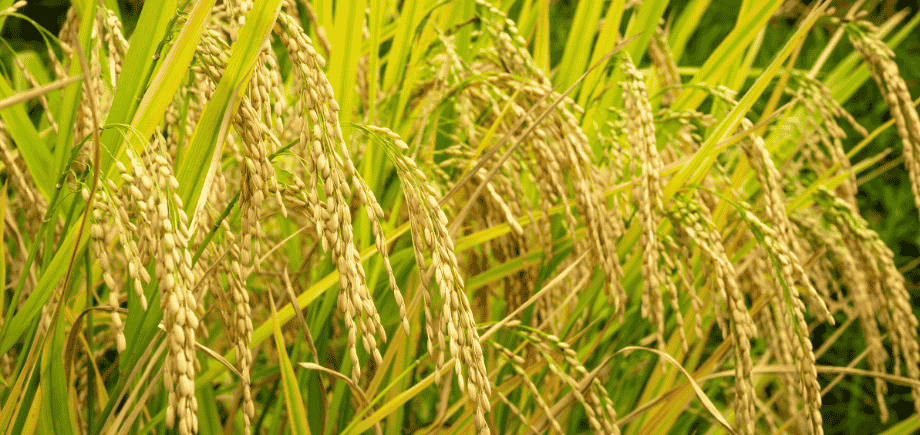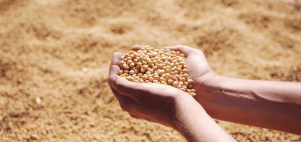In March 2025, the price of rice in Tokyo surged by approximately 90% compared to the same period last year, a dramatic increase that has raised concerns among both consumers and policymakers in Japan regarding food security and economic stability. This has had far-reaching impacts not only on the Consumer Price Index (CPI) but also on inflation in Japan. The following article will analyze the causes of this price increase, assess its impact on the Japanese economy, and draw lessons for the Vietnamese food market.

Reasons for the Surge in Tokyo Rice Prices
The sharp rise in Tokyo rice prices in March 2025 can be explained by four main reasons:
First, poor harvests due to adverse weather conditions: One of the main reasons for the rice shortage is climate change. In the summer of 2023, Japan experienced record high temperatures, with the average temperature from June to August being about 1.76°C higher than the average from 1991-2000. This has led to a decrease in rice yields in major rice-growing areas such as Niigata and Akita, with a serious reduction in rice quality.
Specifically, in Niigata Prefecture, only 5% of Koshihikari rice production reached first-class quality in 2023, a sharp decrease from 80% the previous year. In addition, farmers in Kamimomi Village said that the unusually high temperatures have reduced the moisture content of rice grains, causing them to become smaller and thinner, affecting their quality.
These changes not only affect productivity, leading to reduced supply and higher prices in the market, but also lead to a decrease in rice quality. In response, the Japanese government has stockpiled rice and encouraged farmers to switch to growing heat-resistant rice varieties to cope with climate change.
Second, increased demand from tourism: The strong recovery of the tourism industry after the COVID-19 pandemic has boosted the number of foreign tourists to Japan, increasing demand for rice at restaurants and food service establishments. After Japan completely lifted entry restrictions, the tourism industry has recovered strongly.
The number of international visitors to the Japanese market in March 2024 exceeded 3 million, and total tourist spending in the period from January to March also reached a record high. Specifically, in August 2023, Japan welcomed about 2.16 million foreign visitors, reaching 85.6% compared to the same period in 2019 before the pandemic.
Third, hoarding and speculation in the supply chain: A factor that cannot be ignored is speculation in the rice supply chain. Distributors and retailers have been holding back goods in anticipation of higher prices. This has led to an artificial shortage, increasing rice prices, even though rice production has not decreased significantly. This speculation has made the shortage even more serious.

Fourth, the policy of reducing arable land: According to the Mainichi Shimbun (Japan), Mr. Kazuhito Yamashita, a former official at Japan’s Ministry of Agriculture, Forestry and Fisheries and a research director at the Canon Institute for Global Studies, the underlying reason for the rice shortage is the policy of reducing arable land, which reduces the amount of land dedicated to cultivation.
Under the arable land reduction policy, rice production is cut to increase market prices, and the government subsidizes rice farmers to switch to other crops such as wheat or soybeans. This policy has been in place for over 50 years, originating from the “Just in Time” culture that contributed to the success of Toyota and the Japanese automotive industry.
Impact on CPI and Inflation in Japan
The sharp rise in rice prices has significantly contributed to the increase in core CPI in Tokyo. Specifically, the core CPI, excluding fresh food, rose by 2.4% in March 2025 compared to the same period last year, exceeding the market’s average forecast of 2.2%. This increase is mainly due to the surge in food prices, particularly rice. This poses a challenge for the Bank of Japan (BOJ) in maintaining an appropriate monetary policy to control inflation and support economic growth.
According to Reuters, one of the world’s largest and most reputable international news agencies, the cost of rice, a staple food in Japan, increased by 92.4% in March, the largest increase since 1976, signaling the pain that households are experiencing from rising living costs.
Inflation in the service sector rose to 0.8% in March, from 0.6% in February, partly due to a 1.1% increase in rental prices, the highest annual increase since 1994.
The Bank of Japan ended its decade-long aggressive stimulus program last year and raised short-term interest rates to 0.5% in January, with the view that Japan is on the verge of sustainably achieving its 2% inflation target.
Bank of Japan (BOJ) Governor Kazuo Ueda said the BOJ will continue to raise interest rates if wage increases continue to support consumption and allow companies to raise prices, thereby maintaining stable inflation around the 2% target.
Lessons Learned for Vietnam
As rice prices in Tokyo skyrocket, a series of serious food security and economic consequences have emerged, not only in Japan but also showing potential vulnerabilities in global food supply chains. This scenario is a wake-up call not only for developed economies like Japan but also for major rice-producing countries like Vietnam. Lessons from Tokyo can be applied in practice to ensure stability in the food market and avoid “rice hunger” in the future.
First, strengthen climate risk forecasting and management: Climate change is a major factor leading to rice shortages in Japan, and Vietnam cannot stand aside in the face of this challenge. Especially in the Mekong Delta, Vietnam’s main rice-growing area, saline intrusion, drought and extreme weather events are becoming more common.
Therefore, Vietnam needs to invest in an accurate and timely weather forecasting system to provide information to farmers, helping them to proactively respond to unusual conditions. At the same time, the development of drought-, salinity- and pest-resistant rice varieties needs to be promoted to minimize the impact of climate change and protect domestic rice supplies.
Second, building and effectively managing national food reserves: The lesson from Japan is that rice shortages come not only from reduced production but also from a lack of national food reserves.
To avoid this situation, Vietnam needs to build and maintain an effective national rice reserve system, ensuring that there is no shortage of rice in emergency situations. The government needs to have a transparent strategy for replenishing and releasing reserves to stabilize rice prices, avoiding speculation and artificial scarcity. In addition, it is necessary to develop a flexible distribution system that can adjust supply promptly when the market fluctuates greatly.
Third, control speculation and price manipulation in the supply chain: An important factor causing the sharp increase in rice prices in Japan is speculation in the supply chain, leading to artificial scarcity.
Vietnam needs to strengthen supervision and inspection of rice trading activities to prevent speculation and hoarding of rice to manipulate prices. Authorities must implement strict measures to ensure that the rice market operates transparently and fairly, helping consumers and farmers not suffer losses from unhealthy practices.
Fourth, diversify export markets and develop processed rice products: Vietnam is one of the world’s largest rice exporters, but still depends heavily on raw rice exports. This makes the Vietnamese rice market vulnerable to global price fluctuations.
To minimize this risk, Vietnam needs to diversify its rice export markets and develop processed rice products such as vermicelli, pho, rice cakes and other products. This will not only increase export value but also help reduce dependence on raw rice prices, creating a sustainable value chain for the rice industry.
Fifth, improve production capacity and product quality: To maintain stability and sustainable development for the rice industry, Vietnam needs to invest in advanced production technology, improve cultivation and post-harvest processes to increase productivity and product quality.
By applying new technologies in cultivation, such as using smart fertilizers, water-saving irrigation and environmental protection, Vietnam can minimize the impact of climate change while improving the quality of exported rice. Improving quality not only helps increase product value but also strengthens the position of Vietnamese rice in the international market.
Source: Industry and Trade Newspaper











